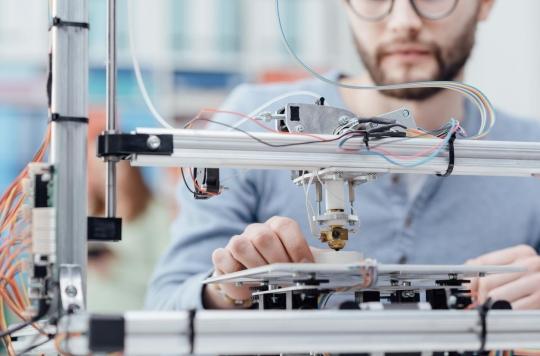American researchers have just shown the viability of tissues made by 3D printing, two months after their implantation in mice.

A new decisive step has been taken in the bioprinting of living tissues and organs. American researchers from Wake Forest Baptist Medical Center, a leading institute in the field of regenerative medicine, have just shown the viability of organs resulting from 3D printing after their implantation in mice. These jobs were published in Nature Biotechnology this Monday.
Scientists report having successfully printed ears, bones as well as muscles using their new technology. These structures are made from a bio-ink made of two materials: a biodegradable polymer that serves as a mold or prop, and living cells encapsulated in a hydrogel. Once implanted in guinea pigs, the cells colonize the structure, blood vessels form to provide oxygen to the tissue and the polymer gradually disappears.
Regenerative medicine
It only took two months for the implanted ears, bones and muscles to be integrated into the bodies of the mice. For the authors, these results indicate that their bio-ink provides the right environment to keep cells alive, and allow them to develop.
“This new tissue and organ printer is a real breakthrough in our research in regenerative medicine,” said Prof. Anthony Atala, lead author of the work and director of the Regenerative Medicine Center at the Wake Forest Institute. We can make stable fabrics in human size and in any shape. As it continues to develop, this technology could be used to print living tissues and organs for surgical implants ”.
The promises of bio-printing
Today, laboratories reproduce healthy or diseased living tissues to test different treatments. Within a few years, bioprinting could accelerate the development of personalized medicine. Using cells taken from a patient, doctors can assess the effectiveness of drugs. This technology also offers hope for ending the organ shortage.
The boom is such today that the prospects for bioprinting are considerable, and the end goal is regenerative medicine. But despite the progress made, the impression of functional organs for humans is still science fiction.
.

















